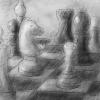I'm unfortunately bringing this topic back from the dead (initially posted here: http://www.gamedev.net/topic/651375-double-screen-resolution/)
In favor of using SDL_BlitScaled, I migrated all of the code to SDL 2.0. Unfortunately, the slowdown is back again. How can I double the screen resolution so that every 1x1 pixel is a 2x2 pixel? I'm surprised that they still haven't implemented anything like this. It runs at full speed at the small resolution, but I would like for it to be double that without having to scale all of the graphics in advance, which will consume more ram.
Is there something that I am forgetting? Thanks!








